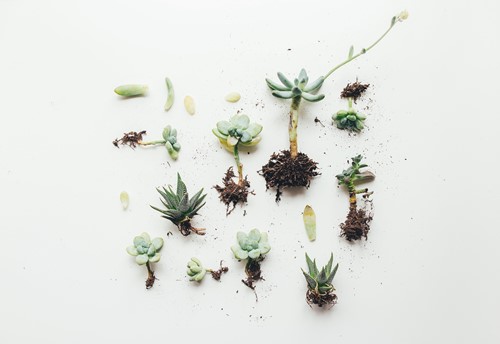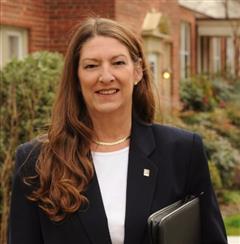
With the amount of different soil options available, it’s hard for houseplant beginners to know what’s best. While many plants can thrive in almost any environment, soil included, others have specific requirements. Here we will go over the differences between the most commonly used potting mixes to help you make the best decisions for your plants.
Potting Soil vs. Potting Mix: What’s the Difference?
You’re likely to see the terms potting soil and potting mix used interchangeably. However, it’s important to know the one distinction between the two. Potting soil can contain actual soil, which includes particles of organic material. True soil is heavier and denser than the combination of ingredients in potting mix, which makes it better for outdoor garden beds and ground-level planting rather than containers. Potting mix is the best choice for potted plants (indoor or outdoor) because it allows for better drainage and access to oxygen. You might see potting mix described as “sterile” and this means it doesn’t contain the organic components of soil.
Purpose-Specific Mixes
The ingredients in a potting medium will make it ideal for specific purposes. The two most common distinctions are:
Raised Bed Mix - This type of mix is specially formulated for growing vegetables and other plants that require the highest concentration of nutrients to grow.
Seed Starting Mix - Seed starting mixes are soilless or sterile and have a texture that allows maximum drainage and airflow to help root development.
Plant-Specific Mixes
You will also encounter potting mixes labeled for specific types of plants. The ingredients in these mixes offer specific advantages to help certain plants thrive. Some examples are:
Cactus & Succulent Mix - This type of mix dries very quickly. While it can contain actual soil, it’s mostly made of inorganic materials like sand or perlite. This mix will help extremely low-water plants like succulents and cacti by not holding onto excess moisture that can cause damage to the roots.
African Violet Mix - African violets require a moist environment to survive. Mixes specially created for African violets will have ingredients that hold on to water rather than dry out quickly.
Orchid Mix - Orchids naturally grow from tree bark in their natural habitat. Therefore, you want to avoid planting them in normal soil or potting mix and instead go for an orchid-friendly mix that’s made mostly of tiny bark chips. Sometimes orchid mixes also contain charcoal or perlite to help with drainage.
What Do I Use for My Houseplants?
Except for the plants mentioned above, most houseplants can use all-purpose potting soil. The ingredients will vary from one brand to the next, but typically include a mixture of organic and inorganic materials. Some all-purpose mixes are labeled specifically for indoor use because they don’t include any compost or bark. This reduces the risk of harmful pests like fungus gnats from settling in your houseplants.
These are only the basics of potting mixes, but this key information will help you better understand the differences between the products you’ll encounter for sale. Once you know the ingredients your houseplants need, you can even create your own custom potting mix to use. This can be a rewarding and cost-saving practice, especially when filling your home with a wide variety of plantlife.
About the Author
